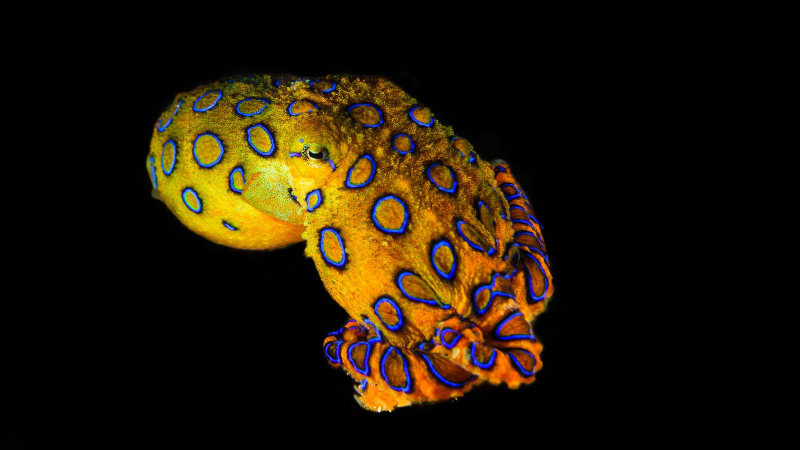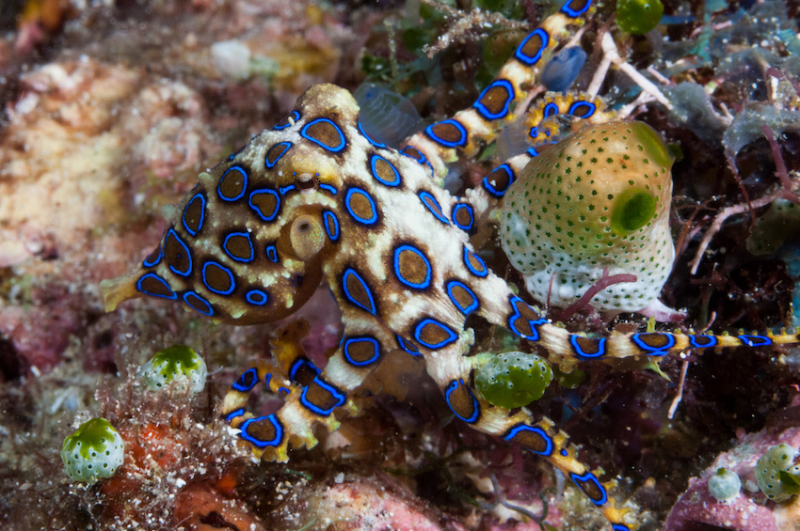Blue-ringed Octopus
Four extremely dangerous octopus species belonging to the genus Hapalochlaena, known as blue-ringed octopuses, can be found in coral reefs and tide pools in the Pacific and Indian oceans, from Japan to Australia. They can be recognized by their characteristic blue and black rings, which change color dramatically when the animal is attacked, as well as their yellowish skin. They consume tiny crustaceans including crabs, hermit crabs, shrimp, and other tiny marine creatures.
The blue-ringed octopus isn't inherently aggressive. Even though it appears entirely brown, it has the ability to change color in order to disguise itself from predators. Its tentacles will form iridescent blue rings on them if it senses a threat. Any predator that tries to disturb the blue-ringed octopus will be poisoned by these blue rings. The average size of these stunning cephalopods ranges from 2 to 20 centimeters.
They are not at all dangerous if you leave them alone and refrain from touching them. Tetrodotoxin, the venom that can damage humans, is produced by the blue rings that the octopus produces when it senses a threat. This venom can cause the body to emit neurotoxins that can paralyze you and stop your breathing. The blue-ringed octopus is one of the most dangerous animals in the world.












